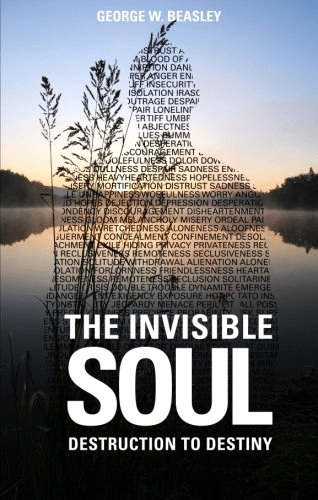The shadows of shame, dread, and guilt have followed George Beasley throughout his life. In his most recent book, The Invisible Soul – Destruction to Destiny, Beasley shares his innermost thoughts and discloses his years-long secret suffering. The idea of an invisible soul—those subdued voices that bring ruin into individual lives—is central to the story. Beasley’s fearless revelation forces people to face and defeat the unseen force that wishes to destroy them.
Beasley had a turbulent upbringing. After being taken from his family when he was just five years old, he sought comfort in group homes, each of which had a lasting impact on his early years. Despite the difficulties, he earned his high school diploma in 1980. When Beasley launched his blog in 2007 to express his ideas and experiences, writing became a therapeutic endeavor for him. His thorough life chronicle inspired the Invisible Soul project.
The titles of The Invisible Soul’s first and second editions, “Destruction to Destiny” and “Rise Up,” respectively, testify to Beasley’s tenacity. His writings can be accessed through the official website, www.theinvisiblesoul.com, which also provides insight into his work’s significant influence in the literary field. On October 14, 2008, Beasley and his wife, Lisa Beasley, launched the initiative, and on July 14, 2017, they broadened its scope.
An essential blow to The Invisible Soul’s journey arrived when Tate Publishing stole money from its writers and held their writings ransom. Unfazed, Beasley saved his manuscript and worked with another publisher to publish the follow-up, Rise Up. The book includes Beasley’s early records from the Boys and Girls Homes of North Carolina, including the court-appointed officers’ notes about his life.
The Invisible Soul explores the duality of one’s existence—one life that is apparent to the outside world and another that is kept private. Beasley highlights that the book is a ray of hope transcending all circumstances. That hope gives every circumstance life while love overcomes all obstacles.
Beasley offers readers a fuller grasp of his perspective and the transformative power of hope through his blog, www.georgebeasley.blogspot.com, where he shares heartfelt anecdotes and his literary works.

Photo Courtesy: George W. Beasley
The Fire
Beasley tells a moving story about spending his childhood in complete darkness in a tiny closet with his brother Mike. The darkness was their newfound buddy and refuge from possible abuse. As a symbol of their perseverance in the face of hardship, they collectively conjured up an imaginary fire for warmth and illumination. The writing on the closet wall, “HOPE,” is a potent reminder that there is always hope, even in the worst circumstances.
Beasley encourages readers to stoke the embers of hope during their darkest moments by comparing the closet to life’s obstacles. The narrative is a monument to people’s inner strength, even under the most trying conditions.
To My Mom
Beasley uncovers a nuanced emotional tapestry by investigating his relationship with his mother. He doubts her decisions, the men she brought into their lives, and how they affected his childhood. Despite suffering, Beasley shows unconditional love and forgiveness, realizing that life’s hardships can lead to beauty.
“To My Mom” is a heartfelt ode that recognizes the complexities of family relationships and moves beyond bitterness. Beasley’s path of learning and forgiveness is a potent reminder that love and forgiveness may shine light into even the darkest depths of one’s life.
The life of George Beasley is a monument to the strength of resiliency, optimism, and the transformational power of love. He challenges readers to face their invisible souls, come out of the shadows, and accept the beauty that can come from suffering through his writing. Not only is the Invisible Soul project a memoir, but it also serves as a ray of hope for everyone making their way through the dark.
Published by: Martin De Juan









